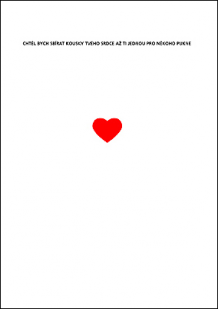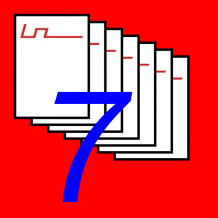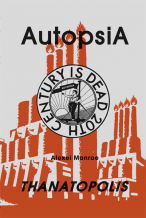| Revista Umělec 1998/8 >> Greetings from Rottnest | Lista de todas las ediciones | ||||||||||||
|
|||||||||||||
Greetings from RottnestRevista Umělec 1998/801.08.1998 David Adamec | australia | en cs |
|||||||||||||
|
"Perth. For thousands of years, members of the Nyoongar tribe have been occupying this territory. The first “white people“ who visited the area were probably Dutch as they landed at the Rottnest Island not far from the coast in December 1696.
Actual settlers arrived 130 years later when the city of Perth was established. The city’s real boom, however, has not occurred until the 1890‘s, the time of western inland’s gold-rush. Today, Perth is a large, dynamic metropolis on the boundaries of a vast waste-land in Western Australia. A remote, lonely outpost of civilization separated from the East coast by 4.000 kilometers of nothing (or almost nothing). The western part of Perth makes up a beach, to the east of the city start Darling Ranges, an ancient continental plain, more than 2.5 billion years old, the real core of Australia. In the city itself, a few shiny sky-scrapers reflect strong sun-rays. And art? There are a few galleries in Perth focusing on contemporary art. The private ones are, unfortunately, not even worth mentioning as far as I am concerned, perhaps I just wasn’t lucky. Thus: if you’re not shopping for a didjeridoo, a boomerang with a picture of a cangaroo on it, by God, don’t go there. State galleries seem to be better at offering quite a varied range of styles and tastes: from classic retrospective of Australia’s Warhol - Tom Gibbons (at Lawrence Wilson Art Gallery) to shows such as the Love Hotel, hip multimedia superexhibition starring major international artists (at the John Curtin Gallery). John Curtin Gallery is quite off the main road in Bentley district at the southeastern part of the city, nested in a recently completed complex of the Curtin University of Technology (designed by Brand, Deakin & Hay). It is, however, worth visiting if it were just for a walk on the cricket court. The University’s architecture is excellent, pleasantly low, hectic in details but overall it is quite classic and sober. Disciplined yet dynamic. Local bizarre greenery (grass trees, hoop pines and mallees) give it their special magic touch. Love Hotel’s curator Michael Desmond chose a peculiar building of a brothel on the outskirts of Tokyo to illustrate the situation in contemporary art. Therefore Love Hotel. The building he picked did not actually look like a building, though, it reminded of a boat. Furthermore, the interior was decorated with truly bizarre inventory: sci-fi, middle ages, baroque, mobile screens and mobile beds. The boundary between form and function disappeared, the world finds itself walking the fine line between “good taste“ and kitsch. There are no unambiguous names of things. This is a rather classic concept of post-modernism yet the illustration of it - Love Hotel - turned out to be very pretty, I think. In addition to a few respected artists (Kounellis, Kelley, Trockel, Goldin, Sterbak), the exhibition presented several less known Australians (Geoff Kleem, Stewart MacFarlane, Peter Cripps). Next to Nan Goldin’s photographs (The Ballad of Sexual Dependency Series, 1981-96) was a cycle by Tracey Moffatt (Scared for Life, 1994), a series of photographs on the traumas of adolescence accompanied by texts. Nobuyushi Araki presented his cycle Colourscapes, 1991, seemingly accidental and varied views of Japanese life ranging from intimate, slightly pornographic images (detail of a sear flower, partly naked geisha) to absolutely public and banal ones (Tokyo at night, a hippo in a ZOO). In contrast to this colorful world were several cold and impersonal photomontages, dealing with very pressing issues (still lives, 1996) made by two artist Aziz + Cucher. These computer manipulated images capture mysterious objects, partly organic and partly electronic, soft limbs made from white plastic with digital connectors at their ends. A six-minute video piece (100 Reasons) by Mike Kelly, Bob Flanagan and Sheree Rose showed Flanagans ass as he receives 100 hits from Kelly’s cane. Similar in their ironic and pubescent spirit are three videos by Cheryl Donegan (Head, Gag and Craft) in which she is showing various slightly obscene gimmicks with punk music playing in the background: Cheryl is sitting on a chair, hands tied to the back of it, holding a baguette between her legs which she is gradually eating piece by piece. Jana Sterbak presents herself with a beautiful fetish: a whip made of a woman’s hair is laying on a table, its phallic shaped handle is made out of glass. Geoff Kleem showed his white Untitled, 1995 which is a huge wooden cabinet on wheels, an absurd minimalist piece of furniture that reminds of and pokes at works by Donald Judd. Similarly inconsequent is the work by another “carpenter“ Richard Artschwager (Manter, 1990) who showed perfectly rendered hanging “statue“: a bizarre cubist piece of furniture made out of polished wood. Richard Jones’ statue is, too, a certain form of a very refined quotation. His Untitled, 1989, a two meter bronze statue strongly reminds of abstract art by Brancussi and Arp. Reading the subtitle of this piece, we find out that it is a strictly realistic enlargement of a human chromosome attacked by cancer - a brilliant gag. Based on the abstract cosmological shape, one would expect a title like Genesis or Harmony but here we are standing in front of a large scale dangerous tumor, a memorial to the decease that became a synonym of death in the 20th century. The only painting exhibited at this show is made by Australian artist Stewart MacFarlane (Silent Night, 1988). It is a portrait of a laying woman with a dreamy unfocused look which kind of reminds of works by Czech artist Antonín Střížek and Milan Kunc. Back downtown Perth in the shade of skyscrapers, we find a building named PICA (Perth Institute of Contemporary Art) with a gigantic billboard at is front promoting the Artists Against Racism exhibition. Although the Institute promises a lot of events (lectures, performances, screenings), its inside looks as if nothing has been happening there for quite a while and the exhibition of artists against racism in a dingy hall is really weak. In contrast to this, Art Gallery of W.A. just round the corner from the Institute is definitely worth visiting. In addition to a vast collection of older Australian art, you may find also pieces by European classical artists and a large collection of contemporary art made by native Australians. I must note that this is not in style of an anthropological collection including bows and arrows, it is a completely autonomous and, in the context of contemporary art, sound works which work and are absolute adequate juxtaposed to works by, say, Gerhard Richter who is represented here by two paintings from the ’90s. Except for wooden statues and paintings on eucalyptus bark (which are quite far from our context and have an exotic feeling), works shown here include „classic“ paintings on canvas and two installations. The paintings are mostly abstract, completely covered by a consistent grid of points, circles and lines, the colors are quite sober (ocre, red, black and white). The pieces look especially good in large formats; with their increasing size, their gravity gets stronger, we are pulled into a wild dance, melting in a psychedelic rhythm of colorful stains. Speaking of gravity is not such a far off metaphor as some of the paintings actually look like maps. Plus it is amazing how similar Australian inland viewed from a plane reminds of them; when looked at from above, this dry waste-land turns into a brightly colored image, a never-ending network of circles, points and lines, interwoven with long, straight roads. The pictures’ topics are naturally mythological, strongly rooted in the original world before the Europeans came (dream time) when the country was inhibited by animals and spirits only. This is, however, true for the older generation of artists. Younger people (born after 1950) are more integrated and include some “hip excesses“ in the form of bright colors, irony and revolt. Their work is not straightforward and free of issues (no more “dream time“), they are often quite political and involved in general matters which is good. In his painting Death in Custody, 1987, Robert Campbell Jr. tells a story of an Aboriginal imprisoned by to white men who hung himself in jail. The story is told in a series of comics strips; the figures are drawn in a “primitive“ x-ray style, a traditional technique of the thousands-year-old drawings on rocks. Julie Gough presented an installation Bad Language, 1996, which stresses racial themes much more intensely, giving them a sexual subtext. The installation is comprising of three rows neatly piled paperback with their front pages towards the viewer. Black Lord, Generation of Blood, Slaver, Black Ivory, Black Stud, Black Mistress, Jamaica White, Voodoo Slave. Their titles and similarly pathetic illustrations make up a large mosaic of violence, mirroring mean language. Sally Morgan’s bright pop-art painting Greetings from Rottnest, 1988, shows a group of tourists with all their gadgets waving at the viewer happily. The ground beneath them is painted cross-sectionally; naturally it is red filled with egg-shaped cells where the ghosts of the predecessor are sleeping. "
01.08.1998
Artículos recomendados
|
|||||||||||||
|
04.02.2020 10:17
Letošní 50. ročník Art Basel přilákal celkem 93 000 návštěvníků a sběratelů z 80 zemí světa. 290 prémiových galerií představilo umělecká díla od počátku 20. století až po současnost. Hlavní sektor přehlídky, tradičně v prvním patře výstavního prostoru, představil 232 předních galerií z celého světa nabízející umění nejvyšší kvality. Veletrh ukázal vzestupný trend prodeje prostřednictvím galerií jak soukromým sbírkám, tak i institucím. Kromě hlavního veletrhu stály za návštěvu i ty přidružené: Volta, Liste a Photo Basel, k tomu doprovodné programy a výstavy v místních institucích, které kvalitou daleko přesahují hranice města tj. Kunsthalle Basel, Kunstmuseum, Tinguely muzeum nebo Fondation Beyeler.
|






























 We Are Rising National Gallery For You! Go to Kyjov by Krásná Lípa no.37.
We Are Rising National Gallery For You! Go to Kyjov by Krásná Lípa no.37.
Comentarios
Actualmente no hay comentariosAgregar nuevo comentario